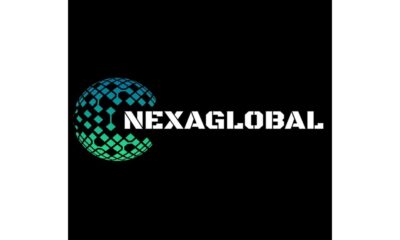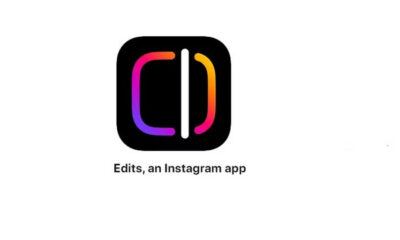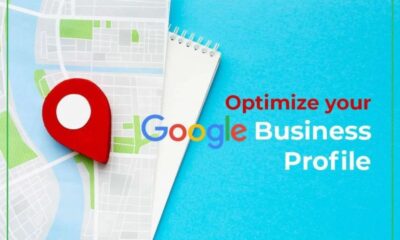Business
Here are 9 Strategies to Maximize the Effectiveness of Your Media Budget

The majority of brands will probably spend the most on media, thus it’s important to work hard at it. The world’s advertising profits have been concentrated in a select few search, social, and retail media platforms during the past few years. This has made it extremely difficult for businesses to plan an efficient and successful reach-based strategy that balances conversion-based and brand-building efforts and prevents duplication.
It makes sense that many businesses are debating whether to completely shift their media buying in-house in the hopes of obtaining more incisive solutions for efficient planning, given that they plan a large percentage of their media directly with platforms and frequently lack complete authority over retail media purchased by colleagues in sales.
A learning mentality is necessary for effective media
Proactively defining protocols and goals for media relations are hallmarks of the most powerful brands. The nature of your audience, their demands and motivations, their path to purchase, and category dynamics like frequency of purchase, competitiveness, and purchasing behaviors are all important factors to take into account when applying effective media concepts to your business.
However, in a world where cookies might eventually vanish and where advertising platforms push hard to marketers, including convincing statistics in their pitch, here are some guidelines to assist any marketer take charge of their media.
Maximize your expenditures
Measuring marketing spending accurately and regularly is the first step. Set up a clear taxonomy that provides you with a comprehensive overview of each penny, and establish a target that divides costs into development and deployment (or working and non-working, as they were previously called).
Reduce development expenses as much as you can by managing a small agency roster, repurposing assets, and developing a learning plan to proactively outline research needs. Putting money into media, which is usually the line of business that works the hardest out of any brand budget, instead of badly performing deployment kinds may present the largest opportunity to boost impact.
Rules of thumb
What lessons can you include in your strategy to get off to a good start, given the abundance of knowledge accessible on best practices?
Evidence suggests, for example, that using many channels is more effective than using just one, that video-based channels continue to be especially powerful at creating brand associations, and, of course, that successful creativity influences both sales and brand outcomes.
Use what you’ve learned
A measuring plan that fits your budget and goes beyond the generic will facilitate future planning. Marketing mix modeling will pay off for brands spending more than £1 million because it can increase gross profit from future media and mix expenditures. In order to maximize scale, brands with smaller budgets are probably more focused on using fewer channels, hence the drawbacks of in-platform attribution modeling might not be as severe.
Balance will result from being clear about the part the media plays in achieving strategic brand objectives. Performance marketing measurements, despite their widespread criticism, have some value when applied appropriately and in the context of your overall goals.
Set priorities
Ascertain that you have enough budget for each activity according to priority and that you have enough money to support your major campaigns. Spending is too frequently dispersed among too many activities without being sufficient to meet customer objectives.
Take the lead with useful resources
Applying this in practice entails prioritizing assets with track records, creating and following pre-testing procedures for new projects, and making sure assets are appropriate for the increasingly divergent nature of various channels. For example, avoid putting professional films on TikTok or user-generated content on TV!
Make connections a plan
Putting the needs of the consumer first is still the best way to overcome the obstacles presented by a fragmented media landscape.
What are the most important stops throughout your audience’s buying journey? What message are they most open to receiving at that moment? What is the ideal ratio between creating connections and closing deals? Are you aiming for the same popular demographic of indecisive, cash-strapped 18 to 35-year-olds, or are you targeting underrepresented groups as well?
Selection standards
Be certain of the headline metrics for sponsored content. What kind of reach—and with whom—are you hoping to get over a specific time frame? In light of connectivity planning, how will you handle this across platforms, and how will you handle frequency capping?
While some brands aim for reach by being broad and deep, understanding how channels work well together, others seek to reach by first optimizing reach across one media channel before adding more to target specific demographics.
Attention
Even while most brands still want to reach, it’s crucial to make sure this is accomplished with a quality attitude that fits your brand.
Brands are becoming aware of the drawbacks of cost per thousand impressions (CPM) and are moving away from just making sure their advertisements are displayed on screens to comprehending the factors that attract attention, such as impactful creativity, audience reaction, and deliberate context.
Data
Purchasing media offers a chance to collect data. Brands are being urged to develop first-party data as cookies become less prevalent. Is it truly necessary, and if yes, how will you use this to your benefit?
Third-party data may work just as well for low-interest, high-penetration categories, and the research supporting the efficacy of personalization is far from certain. How can you successfully integrate first-party customer data with the innovative methods you’re using to interact and sway your audience? What’s your theory, and how are you going to test and get knowledge?
Media (and the technology by which we purchase and evaluate its impact) is dynamic, despite maybe being more consolidated than at any other time in the previous 30 years. AI is undoubtedly well-positioned to assist with some of these puzzles. A learning attitude, humility, and the self-control to always improve, try new methods, and stay ahead of the game are necessary for effective media.
-

 Business3 weeks ago
Business3 weeks agoPrakash and Kamal Hinduja: Driving Social and Environmental Change
-
Education4 weeks ago
Fred DuVal: University Leadership as a Critical Resource for Climate Change Research and Life-Saving Solutions
-

 Health3 weeks ago
Health3 weeks agoThe Hinduja Brothers Commitment to Global Health: Empowering Communities Across Borders
-

 Cryptocurrency3 weeks ago
Cryptocurrency3 weeks agoDesigned For The Masses: How Akasha (AK1111) Is Unlocking Crypto For The Next Billion Users
-

 Cryptocurrency4 weeks ago
Cryptocurrency4 weeks agoNexaglobal & Future World Token (FWT): Could This Be the Next Big Crypto Investment of 2025?
-

 Sports4 weeks ago
Sports4 weeks agoWomen’s NCAA Tournament 2025 Sweet 16: Full Schedule, Fixtures, Teams, Bracket, and How to Watch March Madness Basketball Match Live
-

 Startup1 week ago
Startup1 week agoCost-Saving Strategies Every Small Business Owner Should Know to Boost Efficiency
-

 Startup3 weeks ago
Startup3 weeks agoMatthew Denegre on the Art of Deal Sourcing: Finding the Right Investment Opportunities











